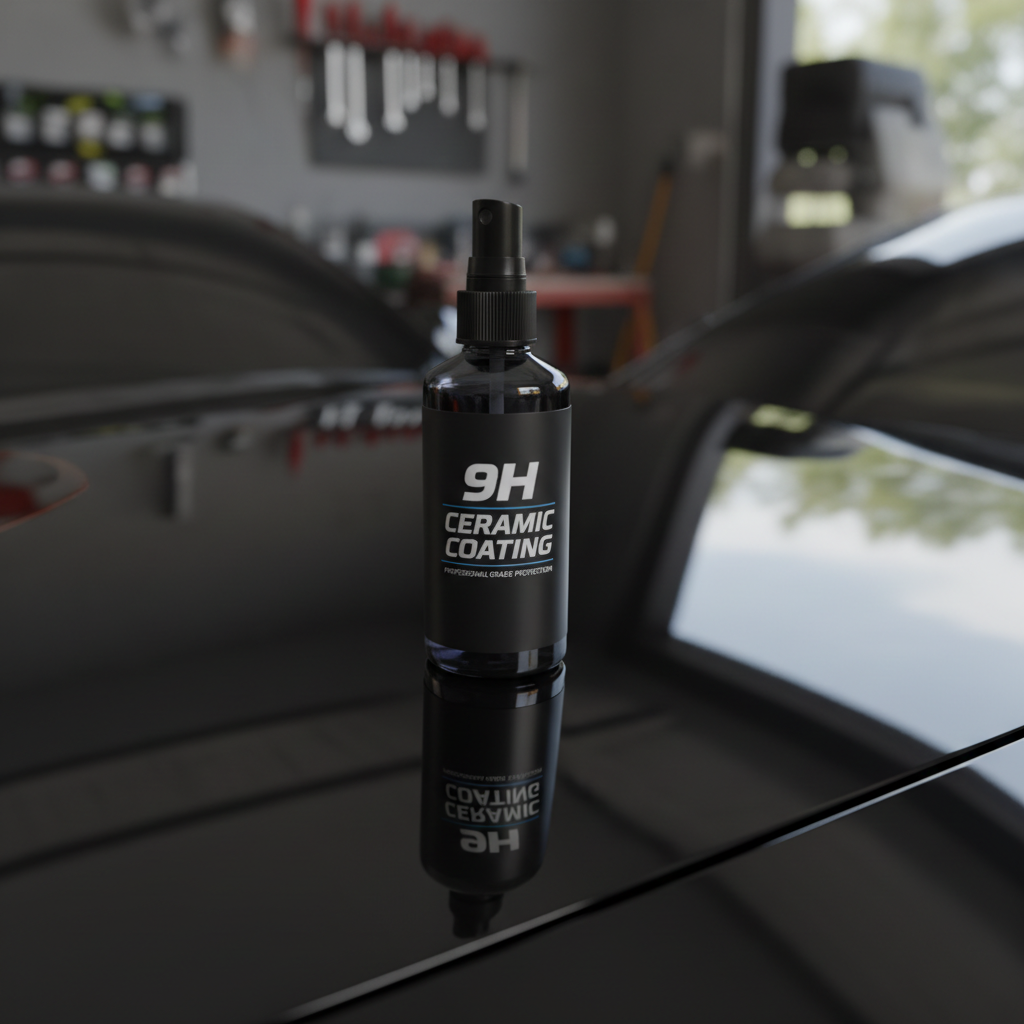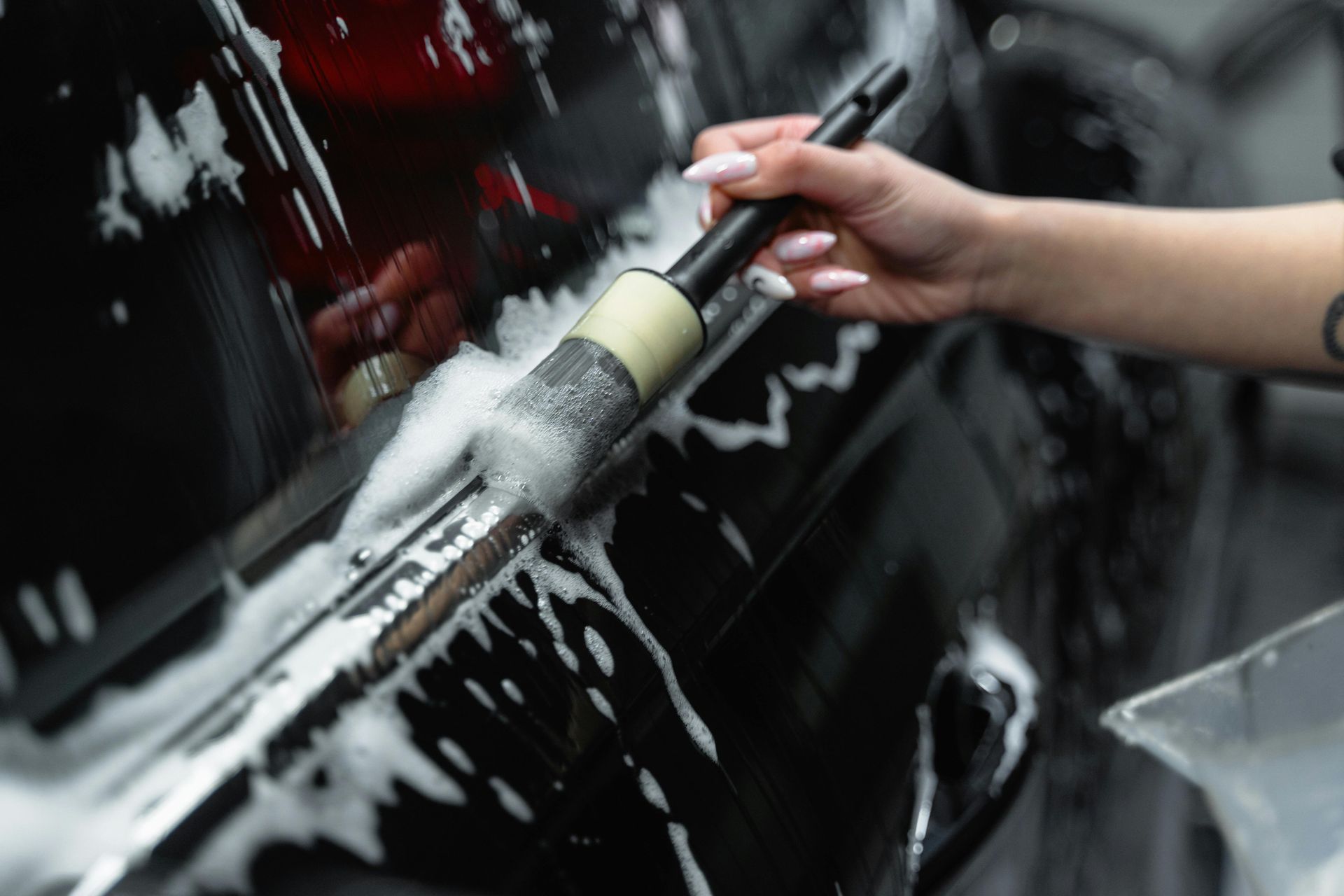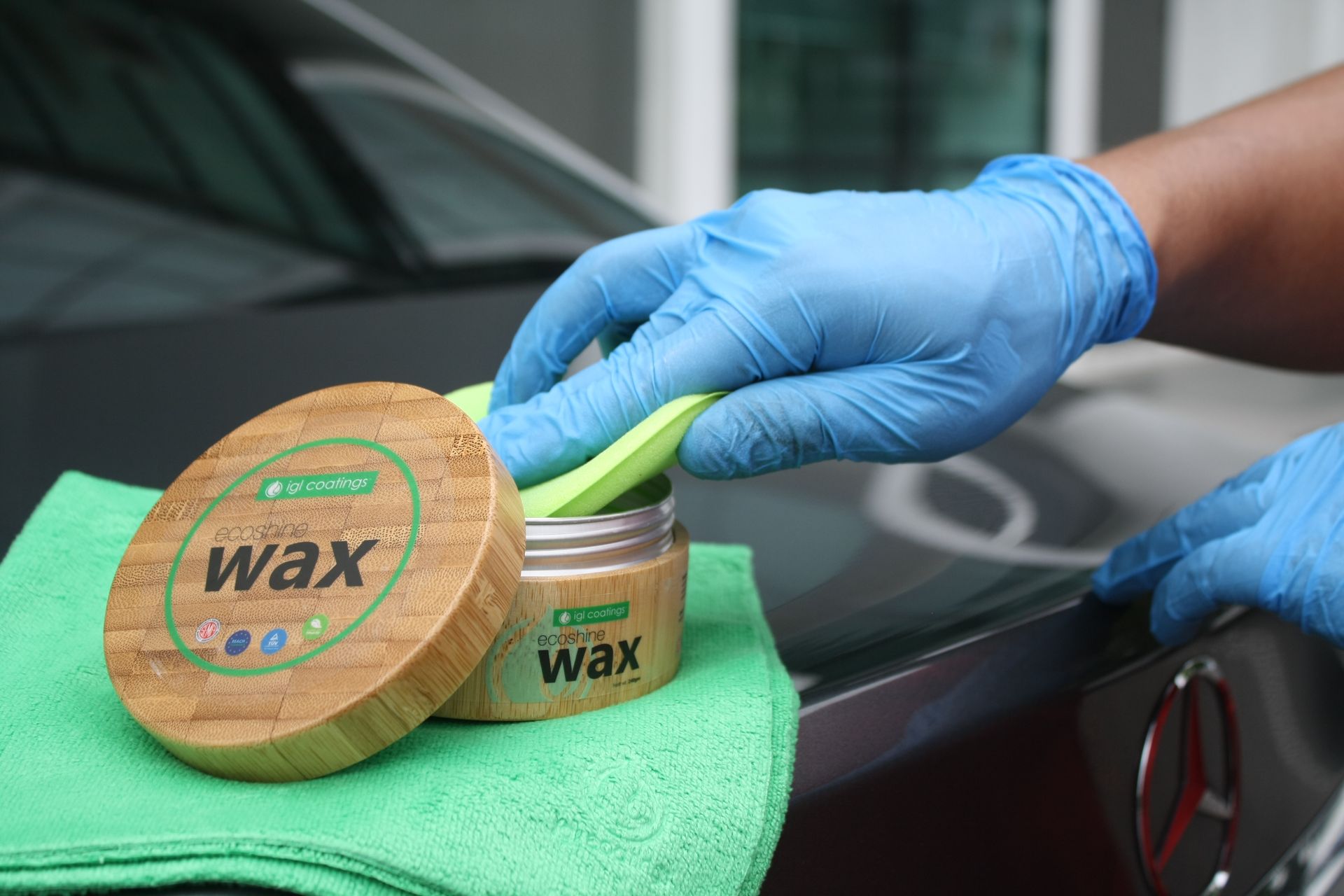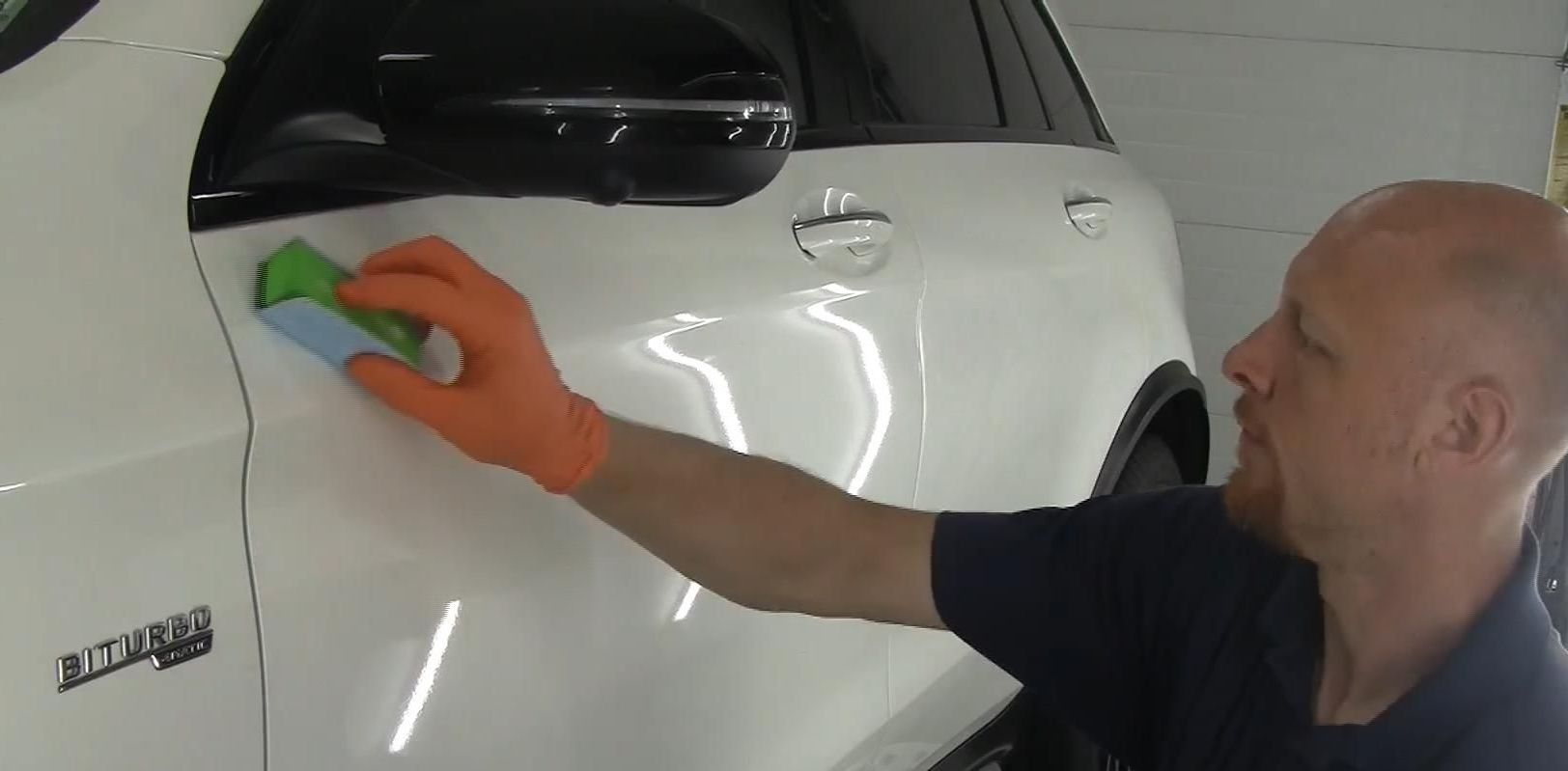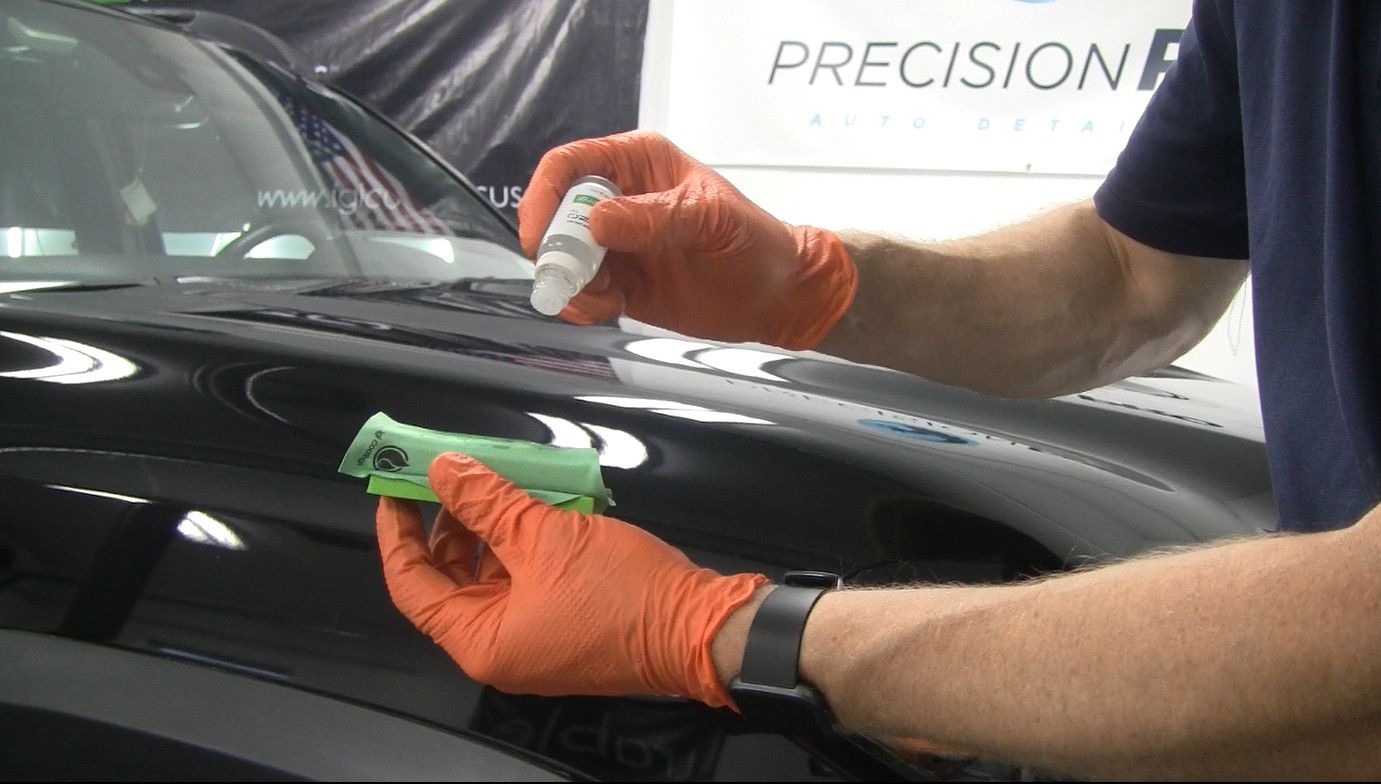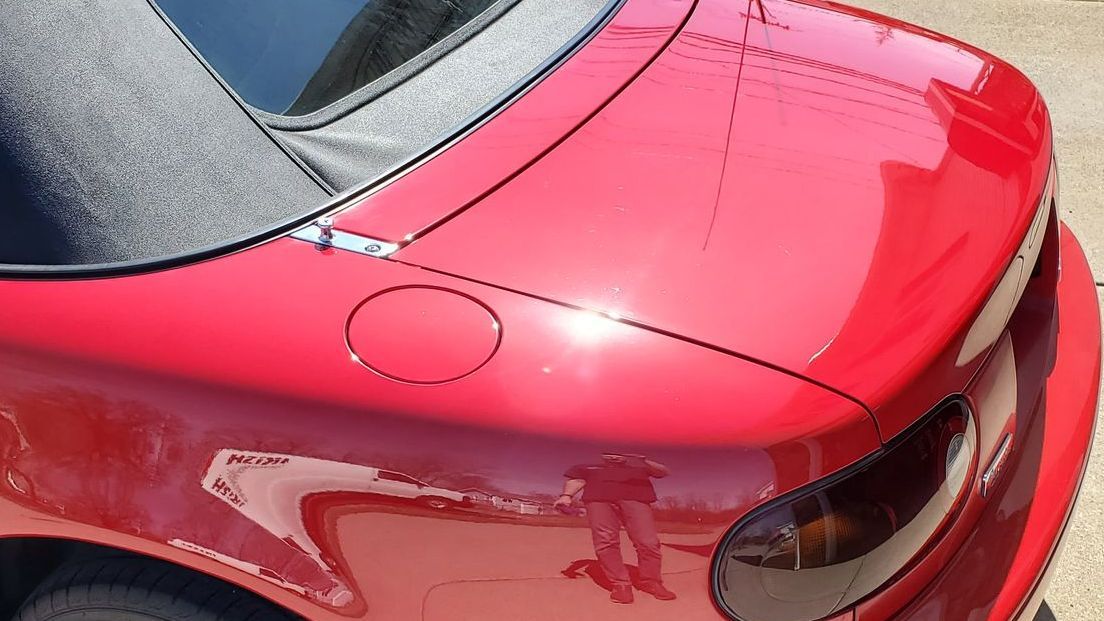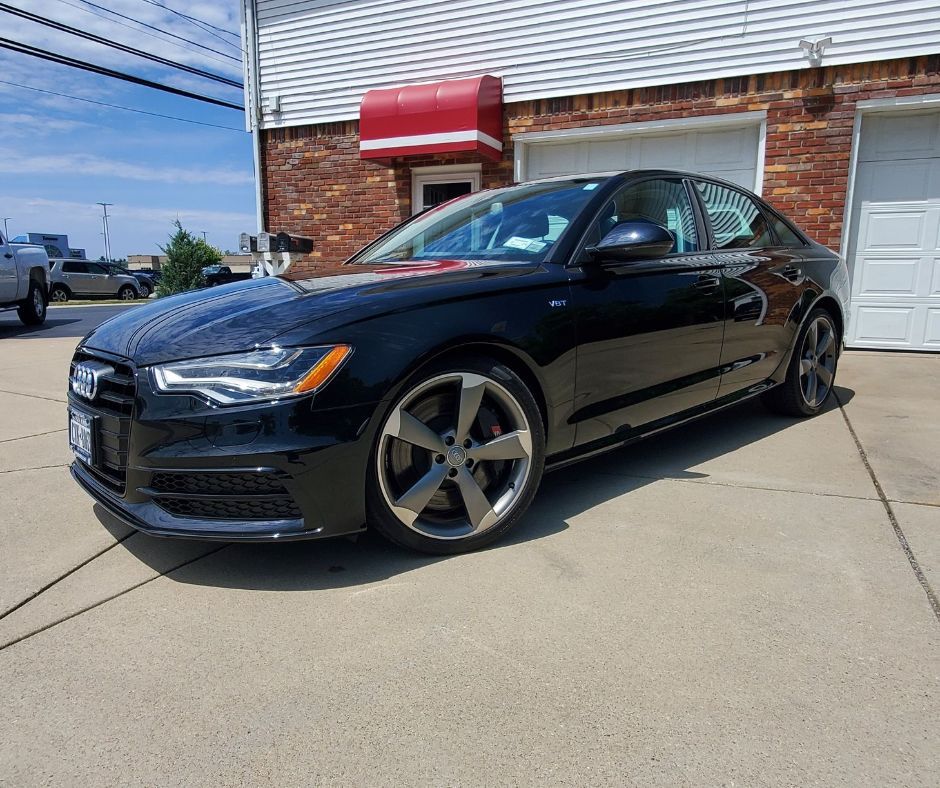Paint Protection Film vs Ceramic Coating: Which Should You Choose?
Introduction
So you’re trying to figure out if ceramic coating or paint protection film is the better move for your vehicle.
But the more you Google it, the more confusing it gets.
I get it. One promises water-beading. The other stops rock chips. Everyone’s got a different opinion, and detailers don’t always explain it in a way that makes sense.
At Precision Auto Aesthetics, we’ve worked with hundreds of vehicles right here in Hamburg, NY — from daily-driven SUVs to weekend sports cars and we’ve had the same honest conversation with our clients time and time again: what’s best for you depends on what you drive, how you drive, and what you care most about.
This blog post is written for you if:
- You’ve been researching protection options and feel stuck or overwhelmed.
- You’ve heard the terms “ceramic coating” and “PPF” but don’t understand the real-world difference.
- You want to protect your vehicle long-term but don’t want to waste money on hype.
By the end, you’ll know exactly what each option does, the pros and cons of both, and which one makes the most sense for your vehicle.
🔑 Key Takeaways: Paint Protection Film vs Ceramic Coating
- Ceramic coating provides long-term gloss, easier maintenance, and resistance to environmental contaminants — but won’t stop rock chips or scratches.
- Paint Protection Film (PPF) is a physical barrier that protects against chips, scratches, and road debris, especially in high-impact areas like the front bumper and hood.
- PPF costs more up front than ceramic coating but offers more durable, physical protection — especially for drivers who hit highways or backroads often.
- You can absolutely combine both — PPF for impact zones + ceramic coating for the entire vehicle — giving you the best of both performance and aesthetics.
- Not every car needs both. Your decision should come down to your driving habits, how long you plan to keep the vehicle, and how important appearance and protection are to you.
- Neither PPF nor ceramic coating is “set it and forget it.” Both need proper maintenance to get the best long-term value.
- Ceramic coatings enhance gloss and slickness. PPF preserves your paint, often with minimal visible change if installed properly.
- My personal opinion on both
What’s the Difference Between Paint Protection Film and Ceramic Coating?
Think of this like choosing between armor and a shield.
- Paint Protection Film (PPF) is a thick, clear polyurethane film that physically absorbs impact — like rock chips, road debris, and scratches.
- Ceramic coating is a liquid polymer that bonds to your paint, making it slick, hydrophobic, and resistant to environmental contaminants.
Here’s a quick breakdown:
| Feature | PPF | Ceramic Coating | Wax/Sealants |
|---|---|---|---|
| Thickness | 6 - 8 mil | < 1 - 1 microns | < 1 Microns |
| Protects from Rock Chips | ✅ | ❌ | ❌ |
| Protects from Swirls | ✅ (self-healing) | ⚠️ (some resistance, not prevention, some coatings are self-healing) | ❌ |
| Enhance Gloss | ⚠️ Slight | ✅ High | ✅ Medium |
| Hydrophobic | ⚠️ Some | ✅ Excellent | ✅ Medium |
| Maintenance Boost | ⚠️ Slight | ✅ Major | ❌ |
| Visibility | Slight texture/seams | Invisible | Invisible |
| Cost | $$$ | $$ | $ |
Does My Car Really Need Paint Protection Film or Ceramic Coating?
This is one of the most honest questions we hear and the answer depends on how much you value your car’s appearance and how long you plan to keep it.
Ask yourself:
- Do I want to keep my vehicle looking new for as long as possible?
- Do I plan on keeping it for more than 3–5 years?
- Do I care about preserving resale value or personal pride?
If you answered “yes” to any of these, then yes — some form of paint protection is worth considering.
But, not every car needs both, and not everyone needs to go “all in.” The right solution depends on your goals.
Which Offers Better Protection: Ceramic Coating or PPF?
If protection from physical damage is your top concern, PPF wins.
Ceramic coating is not made to stop chips or scratches. It is designed to:
- Make your car easier to wash
- Resist environmental fallout (bird droppings, bugs, tree sap)
- Maintain a deep, glossy finish
PPF, on the other hand:
- Physically absorbs impact from rocks, salt, sand, and more
- Can “self-heal” light scratches with heat
- Is commonly used on high-impact areas: front bumper, hood, fenders, mirrors
Think about your driving conditions:
- Highway commuter? PPF up front might be non-negotiable.
- Garage-kept weekend car? Ceramic may be all you need.
What you'll find as you keep reading is comparing PPF and Ceramic coatings is like comparing apples and oranges. While they both preserve and protect, they both do this in a different way. Physical vs chemical protection.
Can I Get Both PPF and Ceramic Coating on My Car?
Yes and it’s actually a smart combo for many drivers.
Here’s how it works:
- PPF is applied first to protect high-impact zones (or full body if preferred).
- Ceramic coating is applied on top — both on the PPF and the exposed painted areas.
Benefits:
- Physical protection from debris + ease of maintenance + deep gloss.
- Ceramic coating also reduces the chance of water spotting and makes cleaning the film easier.
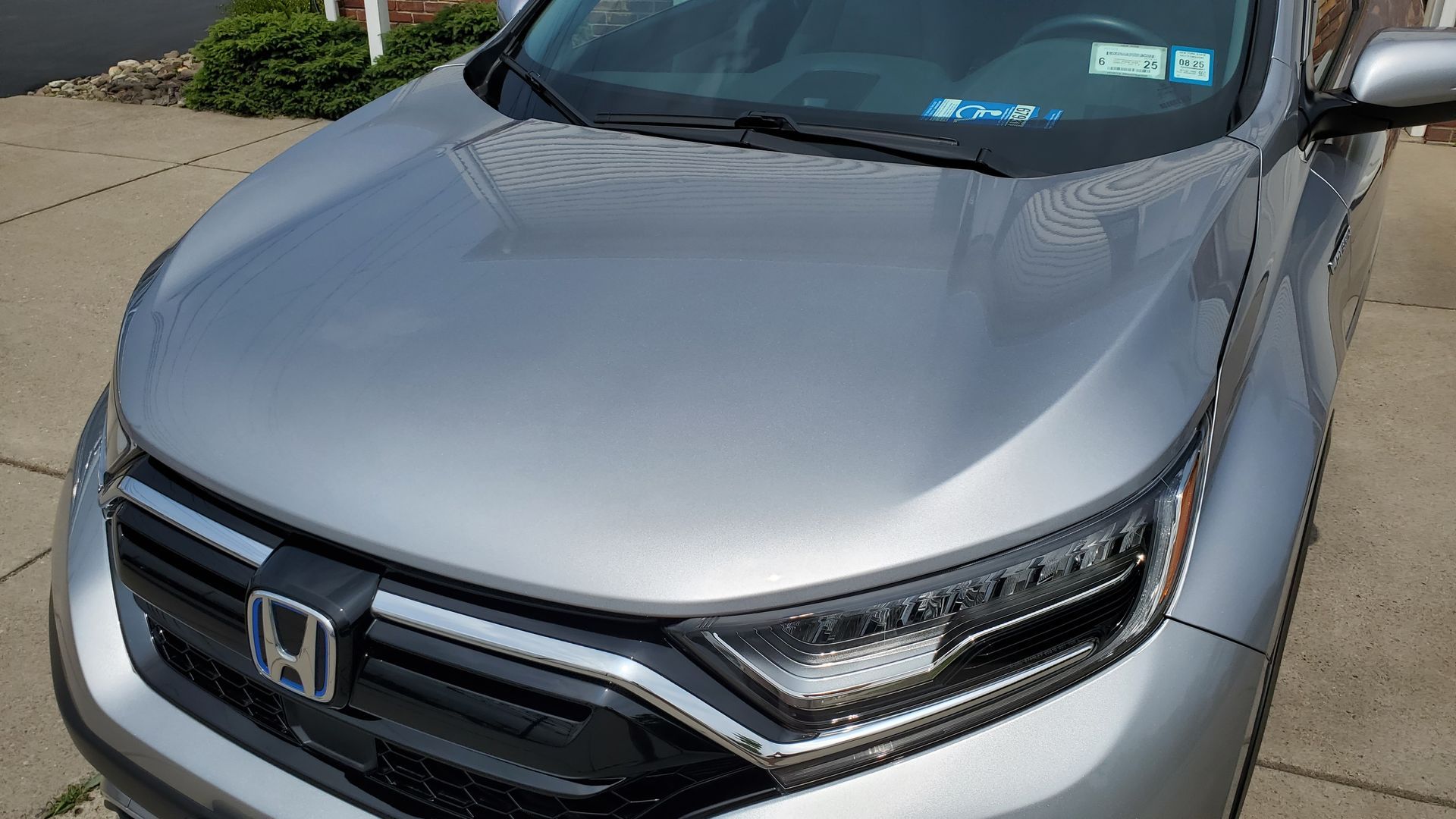
How Long Do PPF and Ceramic Coatings Last? (And What Impacts Their Lifespan?)
Durability depends on:
- Product quality
- Installation skill
- Maintenance
General Lifespans:
- PPF: 5 to 10 years
- Ceramic Coating: 2 to 5+ years
But lifespan isn’t everything. What matters more is performance over time — and how well you care for it.
Factors that shorten lifespan:
- Automatic car washes
- Poor washing habits (dirty towels, wrong soaps)
- No maintenance or inspections
"Whichever you choose, maintenance is key. You can't get or keep that ripped look only going to the gym once or twice a year."
Is Paint Protection Film Worth the Cost Compared to Ceramic Coating?
Here’s the honest truth: PPF costs more and for good reason.
Why it’s more expensive:
- The material is costly
- The process is highly skilled and labor-intensive
- It’s physically protecting your paint, not just enhancing it
But if you live in an area with harsh winters, gravel roads, or lots of highway driving (hello, Buffalo, NY), the long-term value of PPF can outweigh its upfront cost.
Ceramic coating is more budget-friendly, and still adds real benefits, especially in terms of looks, washing ease, and environmental resistance.
Check our ceramic coating service for our ceramic coating price calculator
What Are the Downsides or Limitations of Ceramic Coating and PPF?
Every product has trade-offs.
Ceramic Coating Cons:
- Won’t prevent rock chips or deep scratches
- Needs proper prep and curing
- Performance varies by product and installer
- Doesn’t make your car “maintenance-free” (just easier)
PPF Cons:
- Higher upfront cost
- Slight texture (especially matte PPF)
- Visible seams on some vehicles
- Can discolor if poorly maintained or exposed to harsh chemicals
One thing to add about PPF. If the shop doesn't wrap the PPF around all the edges of panels, the edge of the PPF will become more apparent over time. Dirt and grime will build up along this edge. It becomes difficult to clean and will make that edge more visible.
When Should I Choose Ceramic Coating Over PPF? (And Vice Versa)
Here’s a practical guide:
Choose Ceramic Coating if:
- You want gloss and ease of cleaning
- Your car is garage-kept and not driven hard
- You’re budget-conscious but still want long-term protection
Choose PPF if:
- You want physical protection from impacts
- Your vehicle is high-value or you want to preserve resale
Choose Both if:
- You want the best of both worlds
- You’re planning to keep your car for 5+ years
- You love seeing your car look amazing and stay protected
Here's a great article on the Pros and Cons of PPF
Will Paint Protection Film or Ceramic Coating Affect the Look of My Car?
Ceramic coatings enhance the look. PPF mostly protects it.
- Ceramic coatings add depth, richness, and gloss.
- PPF can have a slight difference on your paints look but that difference is often negligible with high-quality film and install.
- Matte PPF will change the look (at least the ones I've seen), in a good way though.
Done right, both will make your car look amazing and stay that way.
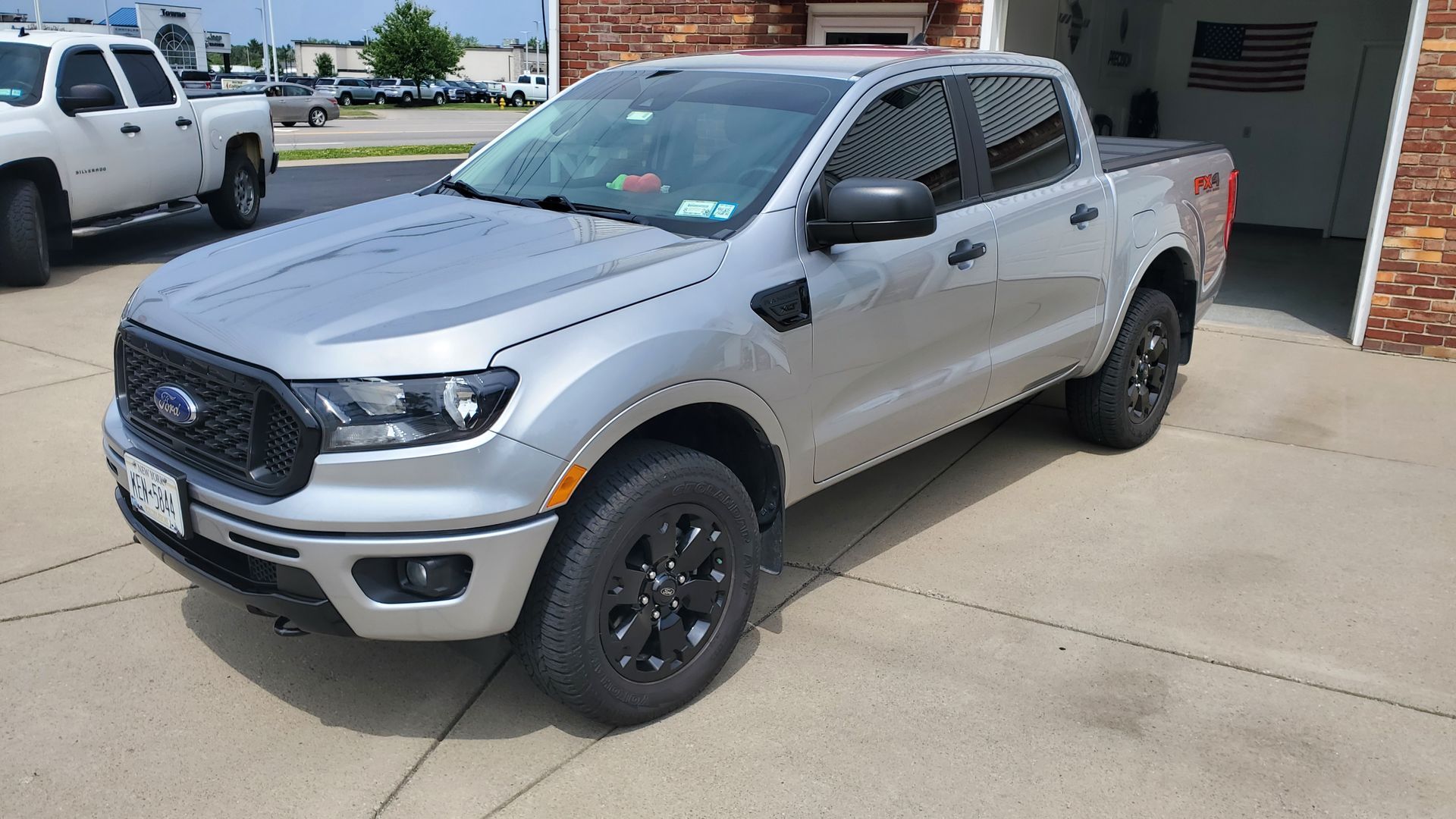
What Maintenance Is Required for PPF and Ceramic Coating?
Neither one is “set it and forget it.” But both make maintenance way easier.
Ceramic Coating:
- Wash every 1–2 weeks
- Use pH-neutral soap
- Avoid tunnel car washes
- Annual top-off/review helps extend life
PPF:
- Gentle washes
- Avoid harsh degreasers or bug removers
- Inspect edges for lifting or damage
- Can also be ceramic coated for even easier maintenance
Here's an article on the Do's and Don'ts for maintaining PPF.
When caring for your ceramic coating, one of your best options is to pair it with our CPM Program. With the monthly detailing service, your vehicle's exterior and interior now stay in top notch condition, all year long.
Is One Easier or Cheaper to Repair or Replace?
PPF is more complex and more expensive to repair but it can often be replaced panel by panel.
Ceramic coatings, if they fail or wear off, usually just require decontamination, light polishing, and reapplication.
In both cases, proper care up front means fewer headaches down the road.
Final Verdict: Which One’s Right for You?
Here’s the bottom line:
- Ceramic coating is perfect if you want a long-lasting shine, easy maintenance, and environmental protection.
- Paint Protection Film is essential if you want physical protection from chips, scratches, and road debris.
- Combining both gives you the best of both worlds.
There’s no one-size-fits-all — just what’s right for you, your vehicle, and your goals.
My Thoughts on Ceramic Coatings and PPF
With ceramic coatings you need to ignore all the hype. You're getting 'wax on steroids' and that's it.
It's designed to give you the shine from a wax or sealant with the added bonus of chemical resistance that lasts for years. Nothing more.
It can still be damaged from bug guts, bird dropping tree sap, etc if you don't maintain it. But it'll be in the coating not on your original paint. Which is what we're trying to avoid.
With PPF, you're getting the physical protection like I mentioned above.
I've seen PPF get hit really hard and save the paint but the PPF had to be replaced.
I've also seen the self-healing aspect of PPF work wonders even from rocks hitting it. Your mileage may vary so keep that in mind.
Because of the price of PPF, I can only see getting it if your protecting a vehicle that doesn't loose value over the years.
In short, I can't see spending the money to protect the front end of a Honda Civic or a Chevy Blazer.
Now, if you have a Porsche, Ferrari, or Aston Martin... well, go nuts!
Ready to Protect Your Vehicle the Right Way?
If you're serious about keeping your vehicle looking incredible — not just today, but years from now — let’s talk. At Precision Auto Aesthetics, we don’t sell packages. We recommend what fits you best.
👉 Book a quick consultation to get a personalized recommendation that makes sense for your vehicle and budget.
Let’s protect what moves you.

